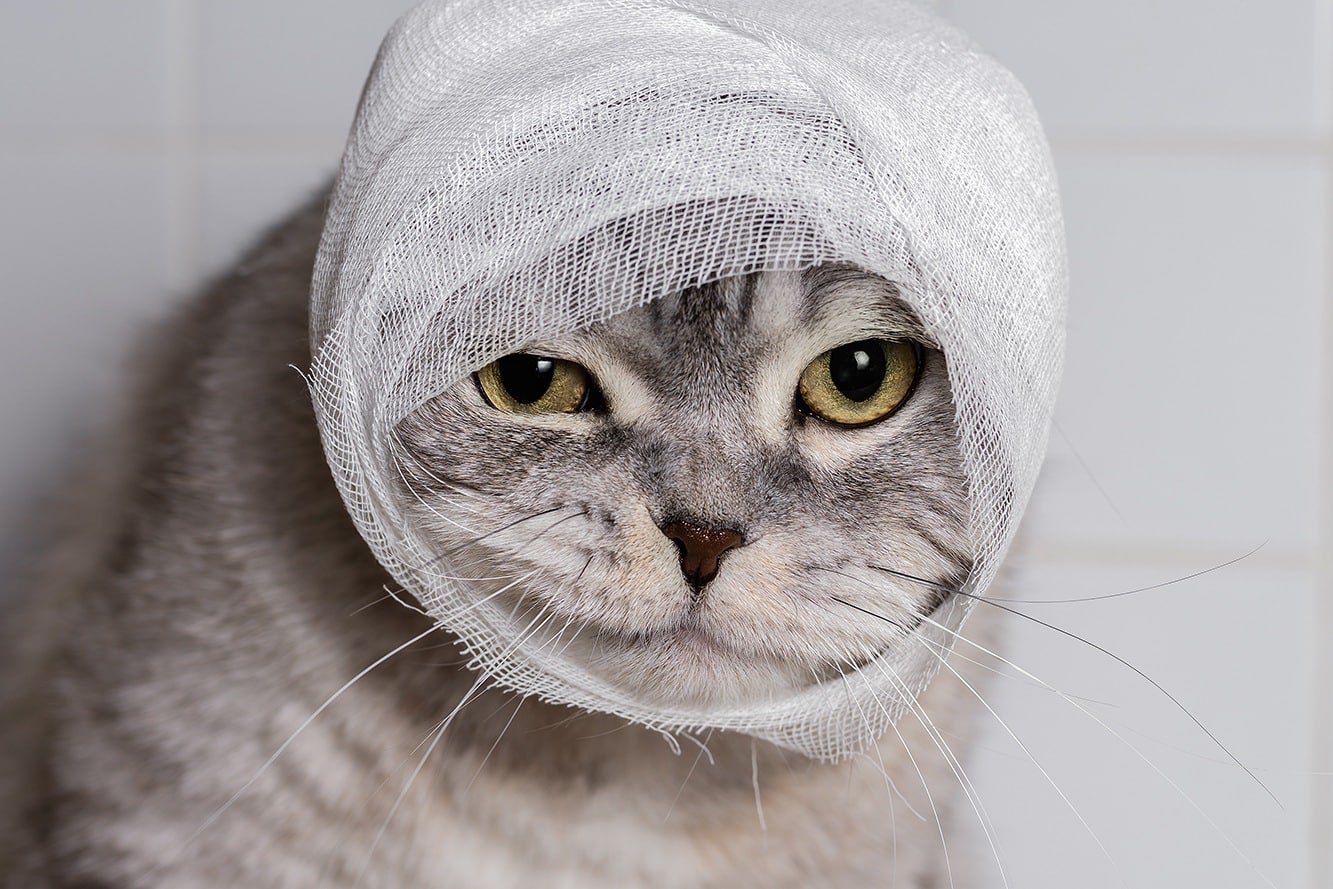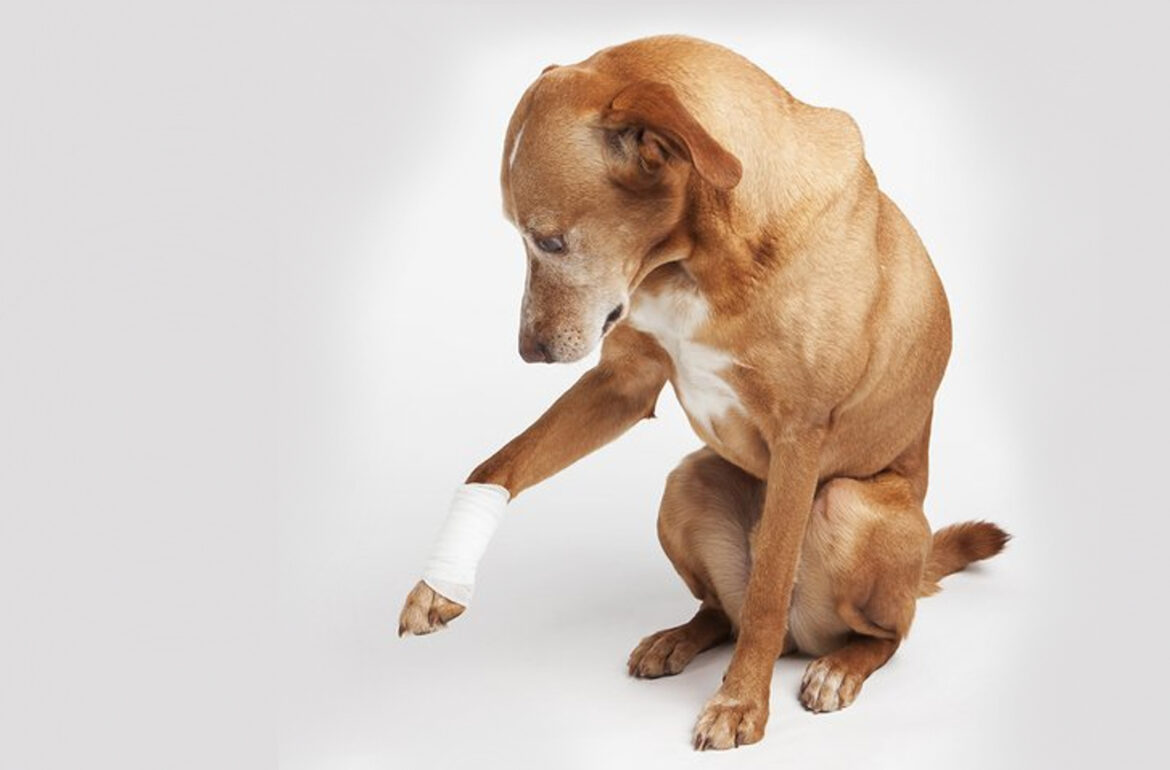Pet injuries are more common than we often realize, and knowing how to treat them before reaching the vet can make a significant difference in your companion animal’s recovery. From minor cuts to more serious injuries like broken bones, being prepared to act quickly can help minimize complications and ease your furry friend’s pain.
While professional veterinary care is always necessary, these first-response treatments can help stabilize your pet and improve the chances of a full recovery. Below are some of the most common companion animal injuries and immediate steps you can take before you get to the vet.
1. What should you do for cuts and scrapes?
Minor cuts and scrapes are among the most common injuries pets experience, especially if they’re active or curious. For small wounds, start by cleaning the area with lukewarm water to remove any dirt or debris.
If necessary, you can use a diluted antiseptic solution, such as iodine, to further clean the wound. Apply pressure with a clean cloth or gauze to stop any bleeding. Once the bleeding has slowed, apply an antibacterial ointment and cover the wound with a sterile bandage to keep it clean.
While small cuts may heal on their own, deeper wounds or persistent bleeding should be evaluated by a vet. Monitoring your companion animal for signs of infection, such as swelling or redness, is crucial. If the wound appears to worsen, it’s important to seek veterinary care as soon as possible to prevent further complications.

2. How do you handle a pet needing CPR?
Cardiopulmonary resuscitation (CPR) is a critical life-saving technique for companion animals experiencing a heart attack, drowning, or choking. If your furry friend is unresponsive and not breathing, performing CPR before you get to the vet could save their life.
To start, lay your pet on their side and check for a pulse. If no pulse is detected, begin chest compressions by pressing firmly on the widest part of the ribcage, about 30 times, followed by two rescue breaths into the nose while closing the mouth.
Repeat this cycle until your companion animal shows signs of life or help arrives. Knowing pet CPR is vital, and learning this skill can make all the difference in an emergency, so make sure you get the right training by visiting https://cprcertificationnow.com/products/pet-cpr-first-aid-certification.
3. How can you treat a burn injury?
Burns in furry friends can occur from a variety of sources, including hot surfaces, chemicals, or electrical cords. If your companion animal has suffered a burn, the first step is to cool the affected area by gently running cool (not cold) water over the burn for several minutes. Avoid using ice or very cold water, as this can cause more damage to the skin. After cooling the burn, you can cover it loosely with a clean cloth to protect it from further irritation.
Do not apply ointments, butter, or creams to the burn without consulting a vet, as this can trap heat and worsen the injury. Burns can be very painful, and it’s essential to get your furry friend to the vet for professional treatment, especially if the burn is severe or covers a large area of the body.

4. How do you immobilize a broken bone?
Broken bones in pets are serious injuries that require immediate attention, but you can take steps to minimize further harm before getting to the vet. If you suspect your companion animal has fractured a bone—indicated by limping, swelling, or refusal to use a limb—do your best to keep them calm and still. Gently wrap the affected limb in a soft cloth or bandage to immobilize it, and if possible, use a splint (such as a rolled-up newspaper or small board) to support the limb.
Be sure not to move the injured limb excessively, as this can cause additional pain or damage. Transport your furry friend carefully to the vet, keeping the injured area stabilized. Fractures require professional treatment, often involving X-rays, and possibly surgery, so prompt veterinary care is crucial.
5. What do you do if your pet is choking?
Choking is a frightening situation, but quick action can save your furry friend’s life. If your companion animal is choking on food or a foreign object, they may paw at their mouth, gag, or have difficulty breathing. First, check their mouth to see if you can spot the object. If you can safely reach it, gently remove it with your fingers or a pair of tweezers. Be careful not to push it further down.
If you cannot dislodge the object or your pet is unconscious, you may need to perform the Heimlich maneuver. For smaller pets, gently hold them upside down and apply pressure to their abdomen. For larger companion animals, place your hands behind the ribcage and give a firm, upward thrust. Once the object is cleared, take your furry friend to the vet for a thorough examination to ensure there are no lasting injuries.

6. How can you address poisoning or toxic ingestion?
If your pet has ingested something toxic, such as certain plants, household chemicals, or human food like chocolate, it’s important to act quickly. Call your vet or a pet poison control hotline immediately for guidance. They may instruct you to induce vomiting, but this depends on the substance ingested, as some chemicals can cause more harm if vomited.
While waiting for help, remove any remaining toxic material from your pet’s reach and keep them calm. If the substance has been ingested on the skin, rinse the area with water to remove it. Poisoning requires urgent veterinary care, so head to the clinic as soon as possible after contacting your vet.
7. How do you handle eye injuries?
Eye injuries can occur from scratches, foreign objects, or irritants. If you notice your companion animal squinting, tearing, or pawing at their eye, they may have an eye injury. Avoid touching the eye directly, and instead, flush it gently with saline solution to remove any foreign debris. Do not apply ointments or eye drops unless instructed by your vet.
Eye injuries can worsen quickly, so it’s important to seek veterinary care immediately. Your vet will be able to assess the damage and provide appropriate treatment, which may involve antibiotics or other medications to prevent infection and promote healing.
Pet injuries can happen suddenly, and knowing how to treat them before reaching the vet can significantly improve your furry friend’s chances of recovery. Always consult with your vet following any injury, as professional care is essential to ensure your companion animal heals properly. By acting quickly and calmly, you can provide the necessary support for your pet in those critical moments.

